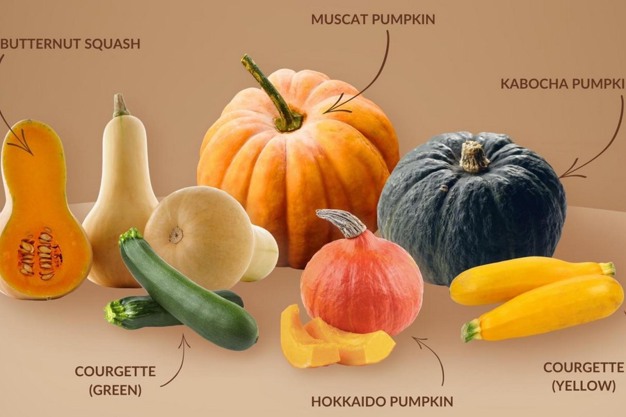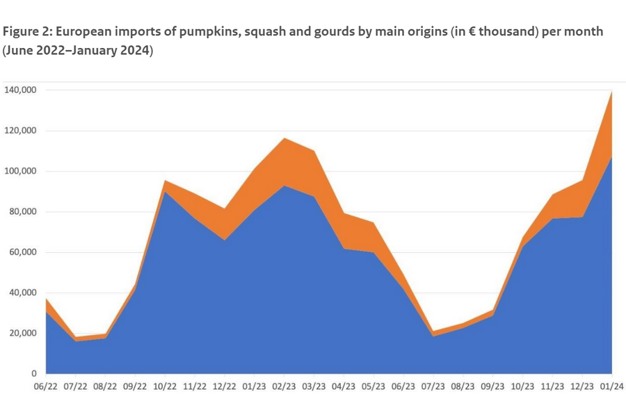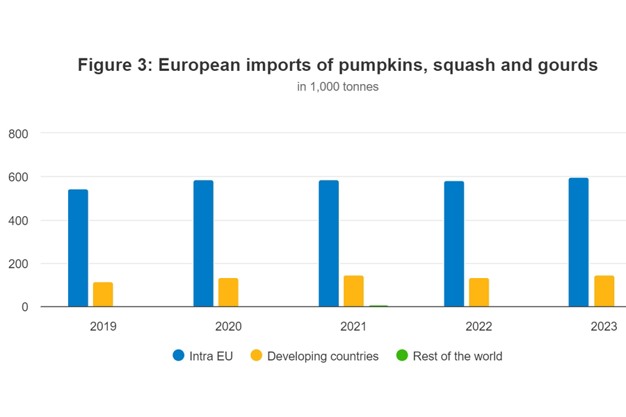The European market for pumpkins and squash is dominated by supply from Spain. However, in the first and second quarter of the year, there is a window for imports of pumpkins from outside Europe. The European market for pumpkins offers opportunities, but competition is strong. Local produce – mainly from Spain – and imported products compete for consumer attention. As pumpkin is a healthy and environmentally sustainable vegetable, its consumption in Europe will remain strong.
Product description
Pumpkins and squash belong to the family Cucurbitaceae (its scientific name), which also includes cucumbers, melons and gourds.

Pumpkins is a squash plant variety of the species Cucurbita pepo (commonly referred to as the field pumpkin). It is usually characterised by its thick rind on the outside and seeds and flesh on the inside. Pumpkins are typically round and orange, although their size, shape and colour can vary significantly between different varieties. They are commonly grown as food items. They can be roasted or made into soups and purees and are famously also baked in pies. They are also traditionally carved out to be used as lanterns during Halloween.
The most known vegetable within the group of pumpkins and squash is the courgette, also called 'zucchini'. Courgettes are a summer squash type that can reach nearly a metre in length, but they are usually harvested immature, at 15 to 25 cm. Courgettes are also treated as a vegetable. They are usually cooked and served as a savoury dish or side.

Like pumpkins, courgettes are from the species Cucurbita pepo and are members of the squash family. They are long, with a smooth, thin and edible skin that varies in colour, typically from green to more yellow varieties. Some popular varieties of courgette include the Black Beauty, the Golden Zucchini and the round globe types, like Ronde de Nice.
Both pumpkins and courgettes are not only versatile in their uses in dishes but also provide nutritional benefits, including vitamin A, potassium and fibre. They can be grown in a variety of climates. The different varieties offer a range of flavours, textures and uses in recipes, from sweet pumpkin desserts to savoury zucchini breads.
This study focuses only on the exports of fresh pumpkin and squash to the European market. The Harmonised System (HS) code for pumpkin is 070993, with the description "Fresh or chilled pumpkins, squash and gourds Cucurbita spp."

What makes Europe an interesting market for pumpkins and squash?
The European market for pumpkins and squash is dominated by supply from Spain. As a result, the quality of the Spanish harvest has a big impact on the European market. Your best opportunities to export pumpkins and squash to the European market are from November to May.
For more information:
CBI
Tel: +31 (0)88 042 4300
Email: [email protected]
www.cbi.eu
